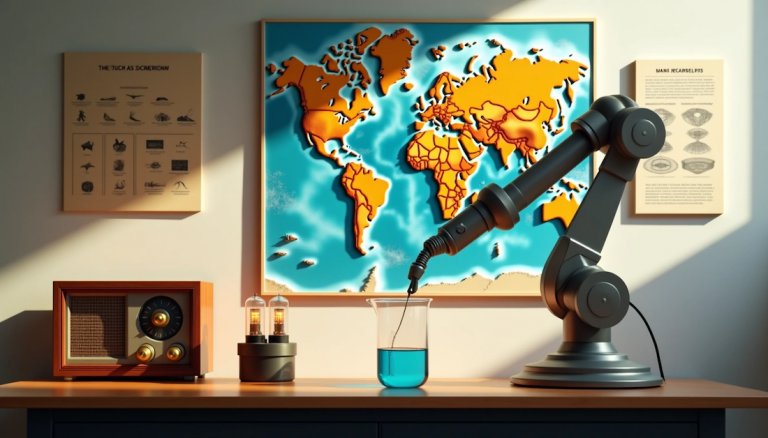Some scientific breakthroughs change the course of history quietly. One such life-saving invention is the Apgar Score — a simple, one-minute test performed right after birth that has saved millions of newborn lives across the world.
Developed in 1952 by Dr. Virginia Apgar, an American anesthesiologist, this test revolutionized how doctors assess a baby’s health immediately after birth. It transformed childbirth care by turning what was once a subjective observation into a systematic, science-based evaluation.
The Birth of the Apgar Score
Before the 1950s, medical staff often relied on experience and instinct to assess newborns. Sadly, this meant that babies struggling with breathing or other complications were often identified too late [1].
Dr. Apgar introduced a simple yet powerful scoring system based on five critical signs of health observed within the first few minutes of life:
- Appearance (Skin Color) – Checks for healthy skin tone and circulation.
- Pulse (Heart Rate) – Measures if the heartbeat is strong and steady.
- Grimace (Reflex Response) – Tests how the baby reacts to gentle stimulation.
- Activity (Muscle Tone) – Evaluates movement and muscle strength.
- Respiration (Breathing Effort) – Assesses the strength and regularity of breathing.
Each category is scored from 0 to 2, and the total — out of 10 — gives doctors a quick understanding of how well the baby is doing.
Why This Test Mattered So Much
The brilliance of the Apgar Score lies in its simplicity.
It doesn’t require complex tools or advanced training — just keen observation and structured thinking.
Before this test, neonatal mortality rates were high because early distress often went unnoticed. The Apgar Score gave doctors and nurses a universal language to identify when a baby needed immediate help — oxygen, warmth, or additional care — all within the crucial first minutes of life.
Today, the test remains a standard part of every delivery room procedure worldwide.
The Global Impact
Since its adoption, the Apgar Score has helped save millions of newborns by ensuring timely interventions. It became a model for public health approaches that value early detection, prevention, and standardized care.
The test’s simplicity made it easy to use even in low-resource hospitals and developing countries, proving that lifesaving science doesn’t always require expensive technology.
Dr. Apgar’s innovation also sparked an entire field of research in neonatal medicine, improving outcomes for premature and at-risk infants [2].
What Students Can Learn from It
For students studying AP Biology or Health Science, the Apgar Score represents more than a medical tool — it’s a lesson in how observation, data, and empathy combine to create meaningful innovation.
It shows how an understanding of human physiology and systematic assessment can translate into global change.
At Kapdec, we emphasize connecting textbook knowledge to such real-world applications — helping students see science not just as theory, but as a force for life-saving impact.
FAQs
What is the Apgar Score?
The Apgar Score is a quick medical test performed on newborns at one minute and five minutes after birth. It evaluates a baby’s physical condition based on five key factors — Appearance, Pulse, Grimace, Activity, and Respiration — each scored from 0 to 2, giving a total score out of 10. This helps doctors decide if a newborn needs immediate medical care.
Who invented the Apgar Score?
The test was created by Dr. Virginia Apgar, an anesthesiologist at Columbia University, in 1952. She wanted to establish a simple, standardized way to assess newborns’ health right after delivery, ensuring that struggling infants received timely help.
Why is the Apgar test performed twice?
The Apgar test is done at one minute to check how well the baby tolerated birth and again at five minutes to see how well they are adapting to the new environment. If the score is still low after five minutes, the medical team may continue monitoring and provide further support.
What is considered a healthy Apgar score?
A total score of 7 to 10 is generally considered normal, indicating the baby is in good condition. Scores below 7 suggest the newborn may need extra attention — such as oxygen, suctioning, or warming — but not necessarily that there’s a long-term problem.
How did the Apgar Score save millions of lives?
Before this test, doctors lacked a clear system to identify which babies needed urgent help. The Apgar Score standardized newborn assessment, enabling faster intervention and reducing infant mortality rates worldwide. It became one of the simplest yet most powerful tools in modern medicine.
Is the Apgar test still used today?
Yes, it remains a global standard in hospitals even after more than 70 years. The test’s simplicity, reliability, and ability to guide early neonatal care make it an essential part of every childbirth.
Can a low Apgar score predict future health issues?
Not necessarily. A low score at birth may simply indicate temporary distress, such as slow breathing or mild asphyxia. Most babies recover quickly with medical care. The Apgar test assesses immediate physical status, not long-term health outcomes.
What can students learn from Dr. Virginia Apgar’s work?
Dr. Apgar’s invention teaches that innovation doesn’t always need complexity — sometimes, the simplest ideas have the greatest impact. Her work is a perfect example of how scientific observation and compassion can come together to change the world.
Final Thought
The Apgar Score stands as a timeless reminder that simple innovations can transform global healthcare. What began as a one-minute test in a single hospital has since saved millions of newborn lives, ensuring every baby gets a fair start. Dr. Virginia Apgar’s legacy continues to inspire generations of scientists, doctors, and students — showing that clarity, compassion, and curiosity can drive real-world change.
At Kapdec, we encourage learners to explore such revolutionary moments in science — not just to study them, but to understand how one brilliant idea can impact humanity forever.



